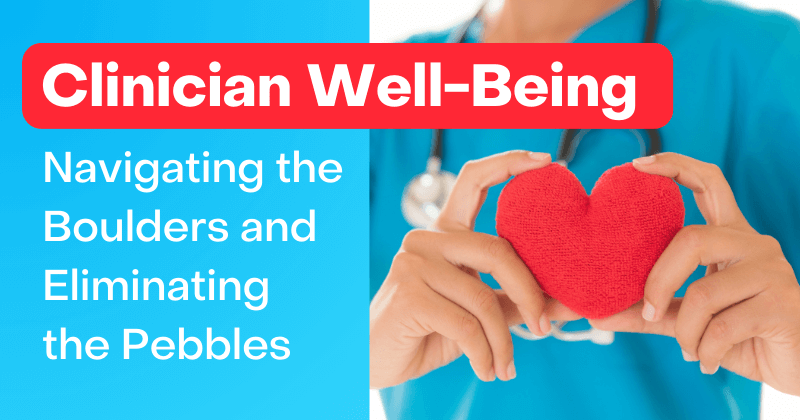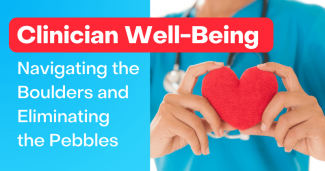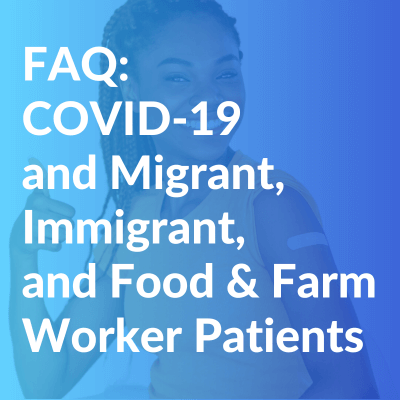Clinician Well-Being: Navigating the Boulders and Eliminating the Pebbles

Clinician well-being has long been a topic of concern within the health care industry as burnout rates among health care workers continue to rise. At Witness to Witness (W2W), we recognize the need to reframe this workplace phenomenon to truly understand and address the factors that are driving so many clinicians to report symptoms of what is often termed “burnout.” Despite what we hear and see, burnout is not simply due to individual factors such as personality or work habits. Instead, it’s often related to larger inadequacies occurring at various levels within the health care system itself. The National Academy of Medicine's (NAM) 2019 and 2022 reports shed light on the primary drivers of clinician distress being systemic in nature and complex, beyond an individual's control because they are determined by a health care organization or the broader health care system. For example, high workload, a lack of control over work, time pressures, administrative tasks, and a lack of social support contribute to clinician distress but are also systemic in nature.
In October 2022, NAM released the National Plan for Health Workforce Well-Being, “intended to inspire collective action to improve the well-being of the health workforce to ensure that health workers can provide optimal care for their patients and improve population health in communities across the nation.” The plan includes seven priority areas that focus on immediate and long-term needs of the health workforce. Also in October 2022, the US Surgeon General released a framework that offers five “essentials” that workplaces can adopt to address workplace mental health and well-being. What stands out about this framework is that each essential has a foundation of two human need components, each one centering worker voice and equity.
The impact of clinician distress on patient care cannot be overstated. But despite these national efforts, there is limited federal funding for research aimed at identifying the fundamental changes needed to create safe workplaces for health care workers and patients alike. This is a serious matter, and significant change is needed at the systemic level while simultaneously working on the individual and team level. The Surgeon General's Framework for Workplace Mental Health and Well-Being is an example of systemic change. It provides organizations with a guide on how to shift mindsets, policies, and practices for reinvesting in worker well-being and creating more supportive work environments. In line with the Surgeon General's framework, W2W provides a holistic approach to change by offering educational content such as online seminars, peer support groups, learning collaboratives for managers, and resources that target well-being and resilience at both the individual and team levels.
Systems change is critical; so is self-care. We like to remind folks that the small is not trivial, and we encourage everyone to practice small acts of self-care and self-compassion. Our bodies give us both psychological and physical cues that warn us when we are outside our resilience zone, in other words in fight/flight/freeze/fawn responses. One of our favorite suggestions is the butterfly hug that can be done at any time, and anywhere. It is done by crossing your arms around your shoulders and moving your fingers like the wings of a butterfly in alternating rhythms while taking deep and slow breaths. The combination of breathing and tapping allows you to connect to your parasympathetic nervous system , helping reduce feelings of distress.
Another quick and easy way to practice self-care and self-compassion is to practice gratitude. Gratitude occurs when we recognize that there is goodness in our lives that makes a difference to us. One way is to use the A.W.E. Method (Attention, Wait, Exhale and Expand), which involves pausing and taking in and appreciating what we see and sense around us. Being intentional with our gratitude practices has significant physical, emotional, and spiritual benefits. Another way is to identify glimmers, which are the opposite of triggers. Glimmers are cues that bring us back to a sense of joy or safety. For example, feeling the wind in your face during a walk or noticing the vivid colors of green in the trees.
Our position at W2W is clear and reflected in a quote from an Institute for Healthcare Improvement white paper: “There may be boulders in the path, but there may still be pebbles in the shoes that can be removed.” At the end of the day, we all benefit from a health care industry that values and cares for all their health care workers.
- Log in to post comments






